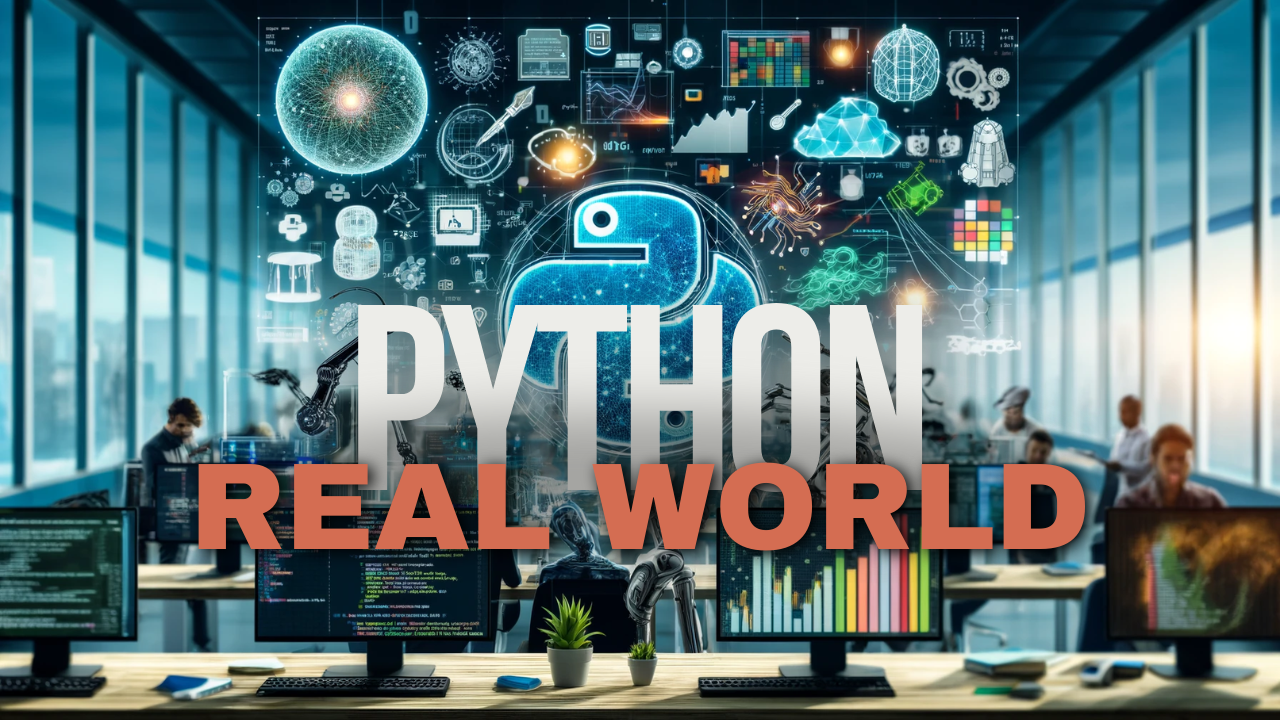
Python, renowned for its simplicity and versatility, has become a cornerstone in solving many real-world problems. Whether you’re a seasoned developer or a beginner, understanding where Python is used can illuminate its potential and inspire innovative solutions. In this blog, we’ll explore various domains where Python shines, providing detailed examples to showcase its practical applications.
Introduction
Python isn’t just a popular programming language; it’s a game-changer across multiple fields. With its readable syntax and powerful libraries, Python streamlines complex tasks and drives technological advancements. Let’s dive into how Python is utilized in the real world with some compelling examples.
1. Web Development
Example: Building a Robust E-commerce Platform
Python’s frameworks like Django and Flask are go-tos for web development. Django, with its “batteries-included” philosophy, provides an all-in-one solution for building robust web applications.
Scenario: E-commerce Website Imagine you’re developing an e-commerce website. With Django, you can:
- Set Up Models: Define your product, customer, and order models.
- Admin Interface: Utilize Django’s admin interface to manage your data effortlessly.
- Secure User Authentication: Implement user registration and authentication features.
- Scalability: Ensure your site can handle heavy traffic during sales.
By using Django, you reduce development time and focus more on the user experience and business logic rather than the nitty-gritty of web development.
2. Data Science and Machine Learning
Example: Predictive Analytics for Sales Forecasting
Python’s prowess in data science is unmatched, thanks to libraries like Pandas, NumPy, and Scikit-learn.
Scenario: Sales Forecasting for a Retail Chain Using Python, you can:
- Data Preprocessing: Clean and preprocess sales data with Pandas.
- Feature Engineering: Create relevant features that can influence sales.
- Model Building: Use Scikit-learn to build predictive models like linear regression or random forests.
- Visualization: Utilize Matplotlib and Seaborn for insightful data visualizations.
For instance, a retail chain can forecast future sales based on historical data, allowing for better inventory management and marketing strategies.
3. Automation and Scripting
Example: Automating Report Generation
Python excels at automating repetitive tasks, saving time and reducing human error.
Scenario: Weekly Report Generation for a Marketing Team Here’s how Python can help:
- Data Extraction: Pull data from various sources such as databases and APIs.
- Data Processing: Use Pandas to process and analyze the data.
- Report Generation: Create PDF or Excel reports using libraries like ReportLab or OpenPyXL.
- Scheduling: Automate the script to run weekly using tools like Cron or Windows Task Scheduler.
This automation ensures consistent and timely reports, freeing up your marketing team to focus on strategy rather than data crunching.
It’s here Integrating Python with JavaScript need to know
4. Game Development
Example: Creating a Simple 2D Game
Python, with Pygame, allows for the development of games and multimedia applications.
Scenario: Building a 2D Arcade Game Using Pygame, you can:
- Game Loop: Set up the main game loop to handle events and updates.
- Graphics and Sound: Load and manipulate graphics and sounds.
- Collision Detection: Implement collision detection for game objects.
- User Input: Handle keyboard and mouse inputs to control game characters.
For example, creating a classic 2D arcade game like Space Invaders is quite manageable with Pygame, making it a great project for both learning and entertainment.
5. Finance and Fintech
Example: Algorithmic Trading
Python is extensively used in the finance industry for its ability to handle complex calculations and data analysis.
Scenario: Developing an Algorithmic Trading Bot Using libraries like Pandas, NumPy, and TA-Lib:
- Data Collection: Gather historical and real-time data.
- Strategy Development: Develop trading strategies based on technical indicators.
- Backtesting: Test your strategies on historical data.
- Execution: Implement the bot to execute trades in real-time.
Algorithmic trading bots can analyze market conditions and execute trades at speeds and frequencies that human traders cannot match, optimizing returns and minimizing losses.
FAQs
Q: Why is Python preferred for data science? A: Python offers powerful libraries for data manipulation, analysis, and visualization, making it a versatile tool for data science projects.
Q: Can Python be used for mobile app development? A: Yes, though less common, frameworks like Kivy allow for the development of mobile applications using Python.
Q: Is Python suitable for large-scale applications? A: Absolutely. Python’s scalability and the robustness of its frameworks like Django make it ideal for large-scale applications.
Immediately you have to know loops in python.
Wrapping Up
Python’s flexibility and ease of use make it a perfect choice for a wide range of real-world applications. From web development and data science to automation and finance, Python continues to prove its worth across industries. By leveraging Python, businesses and developers can solve complex problems efficiently and innovate continually.

